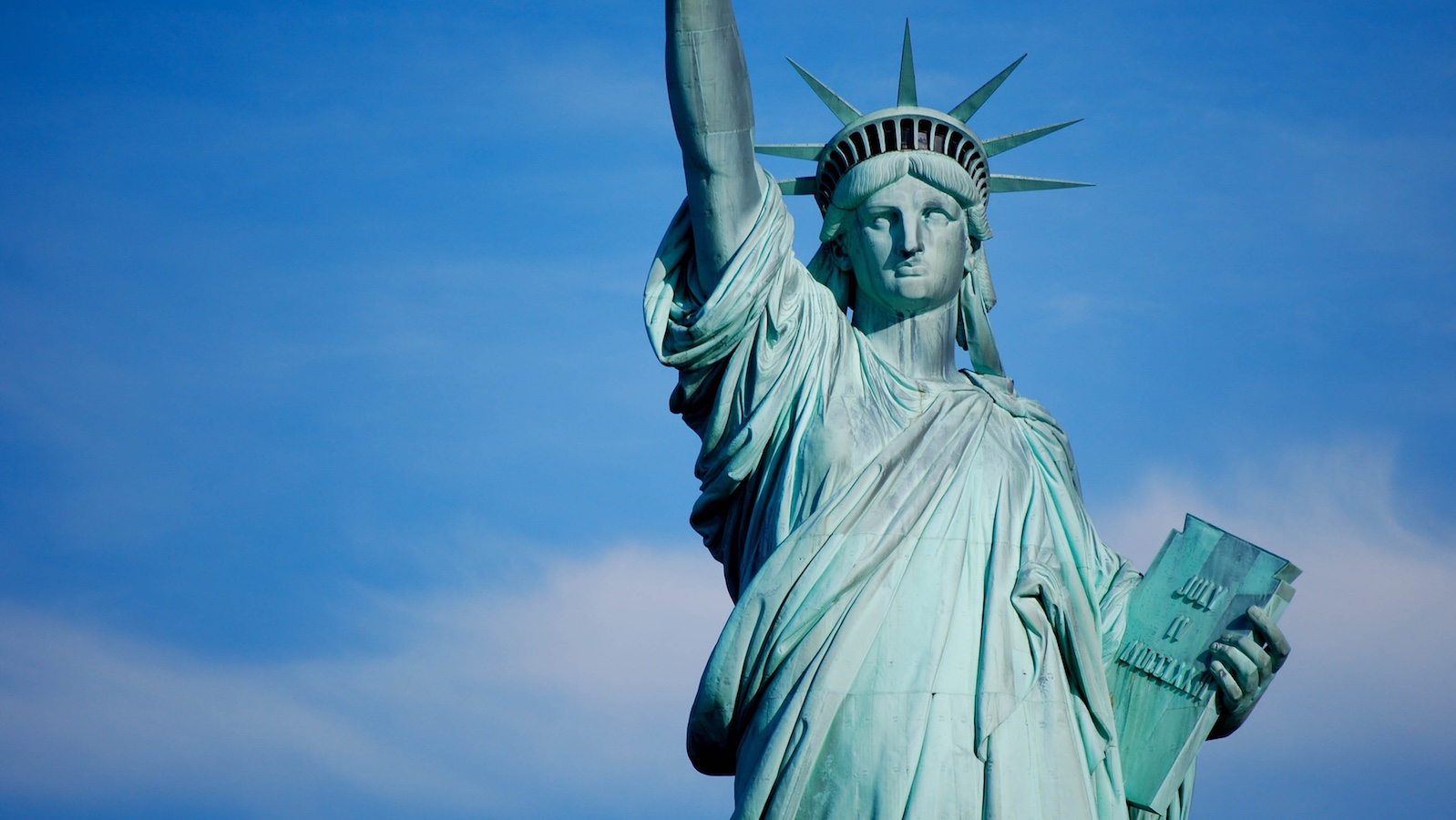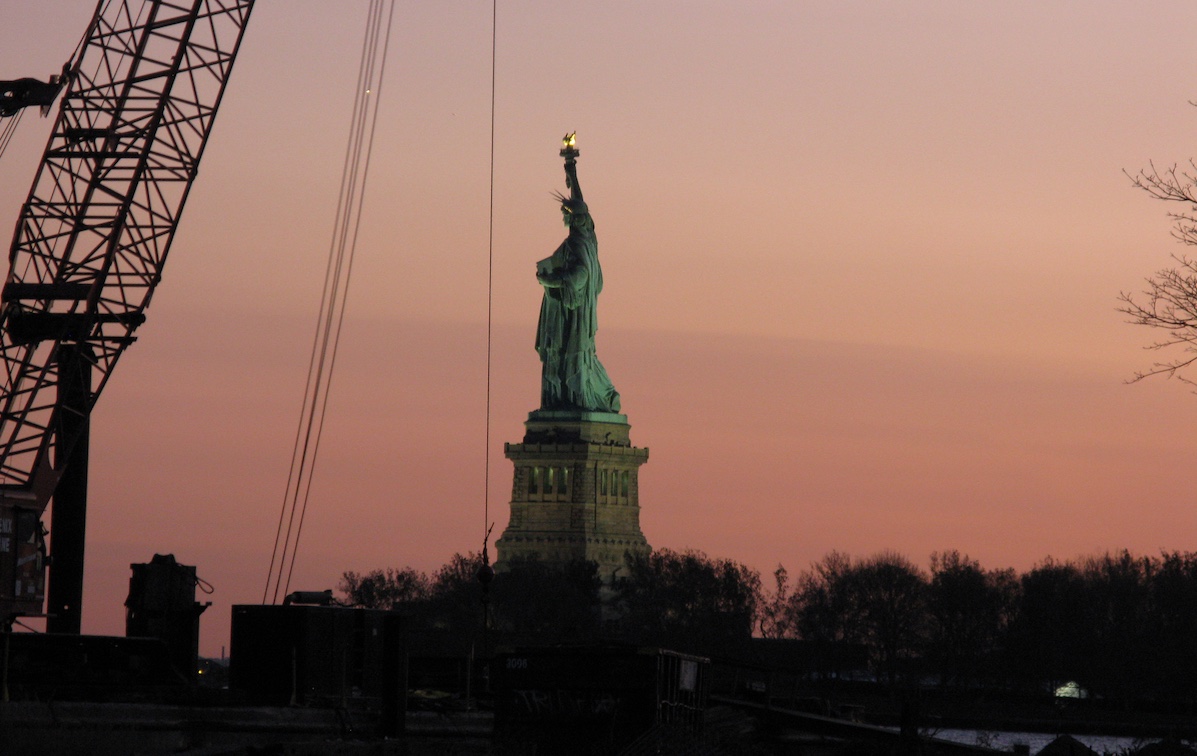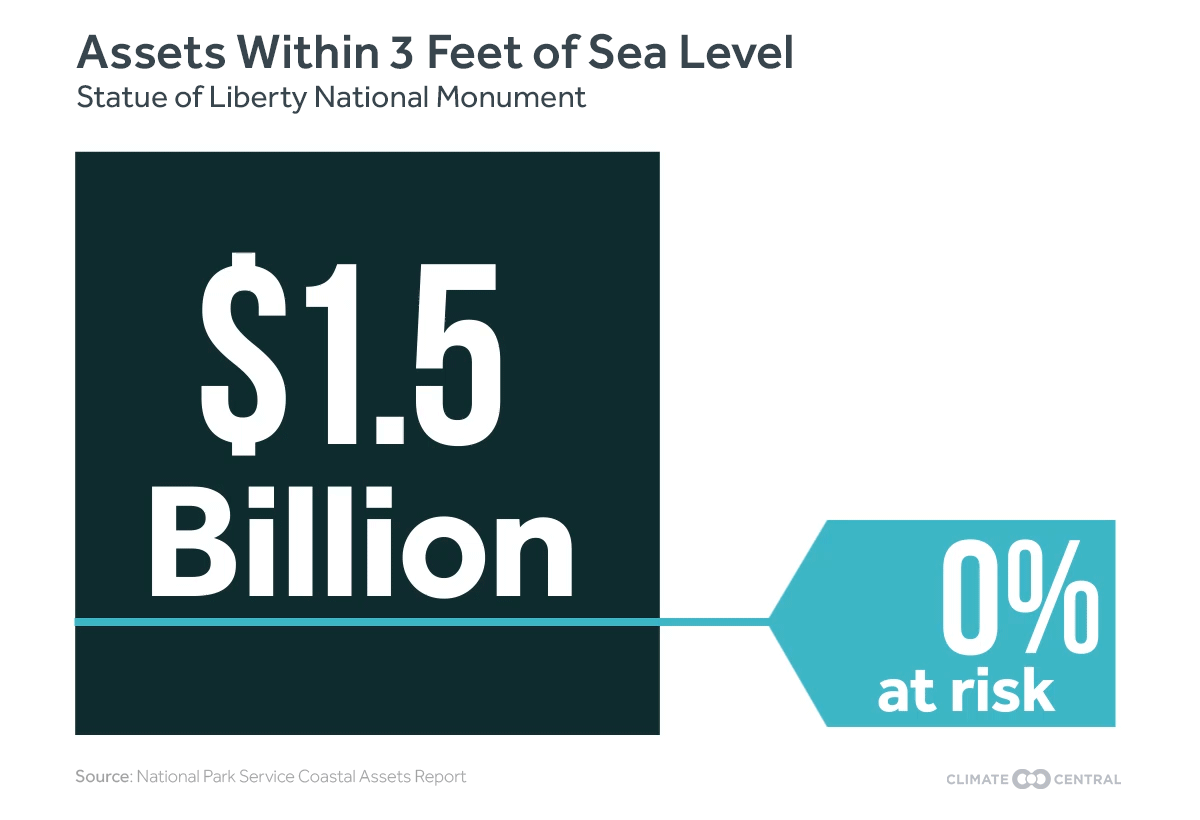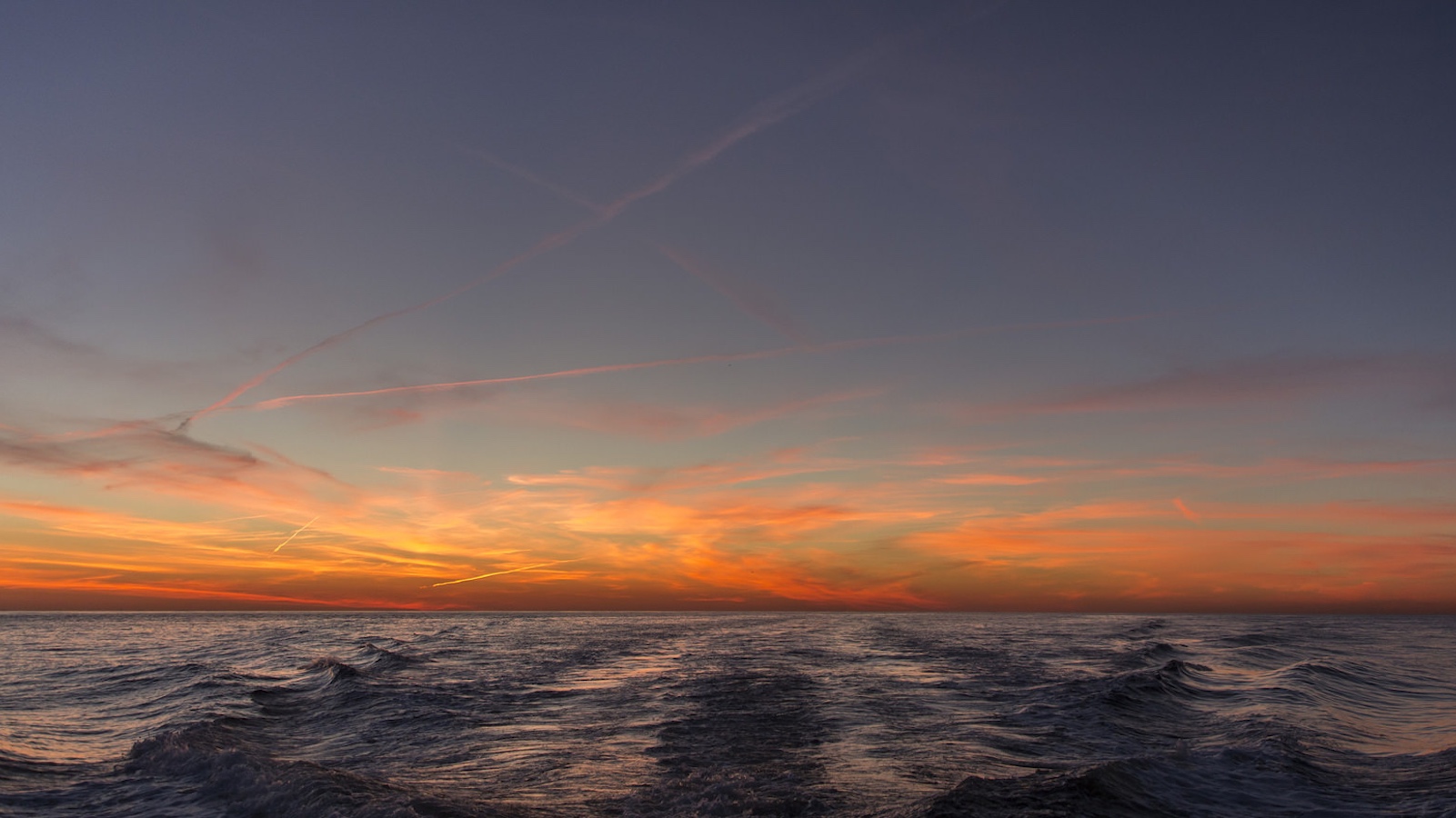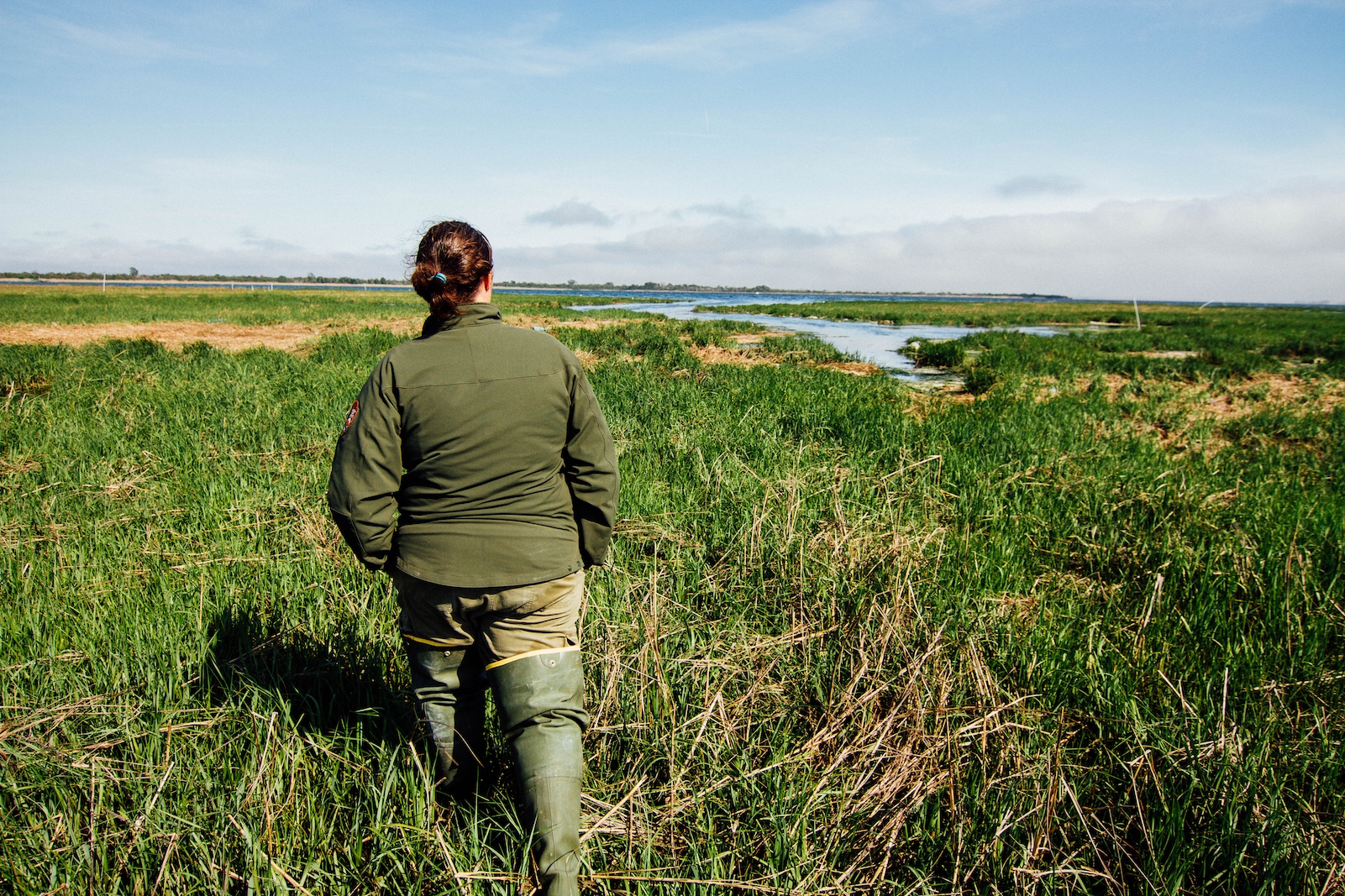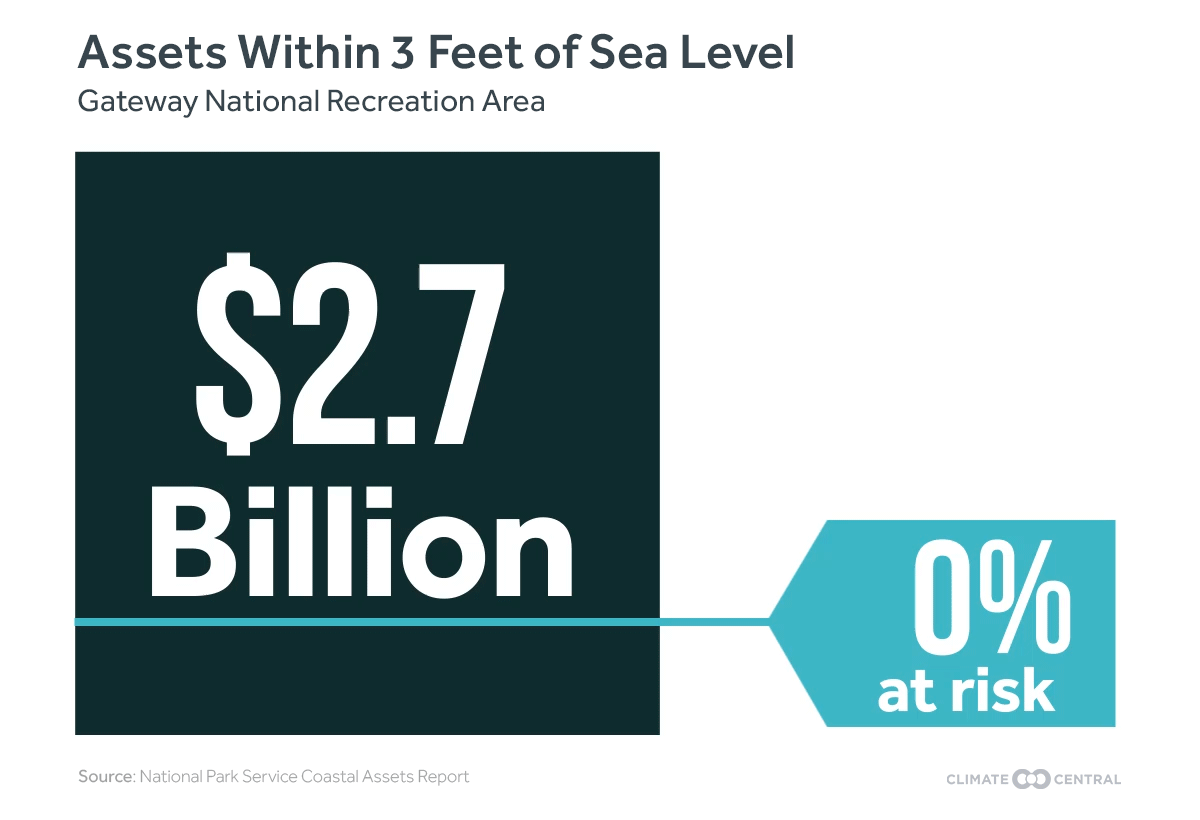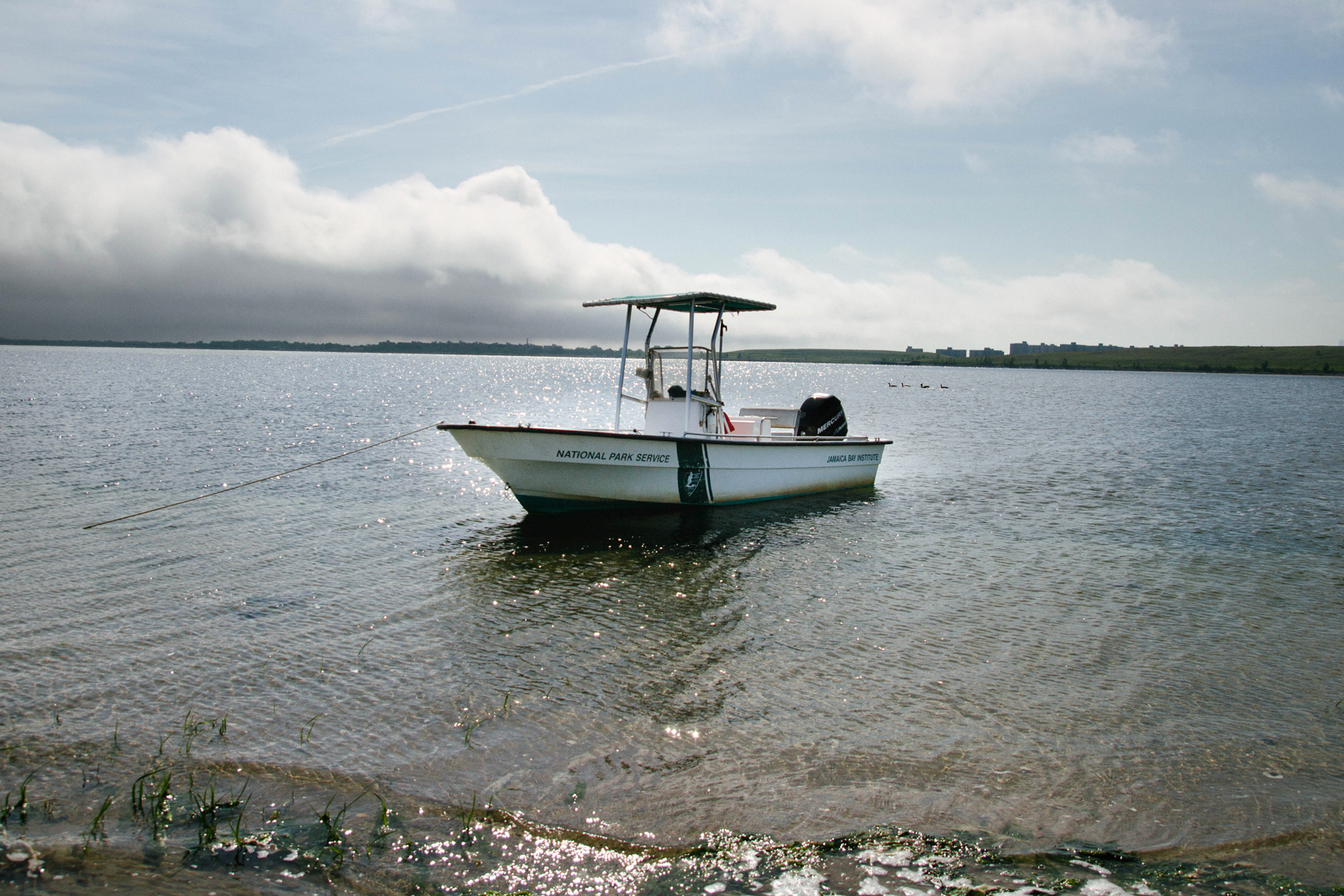The water was up to here,” Rob Parrish said, holding his hand up to his shoulder.
It should be noted that Parrish, the head of professional services at the Statue of Liberty, is a big dude, a former Marine standing well north of 6 feet. In the crowd buzzing around Ellis Island’s main building, he is head and shoulders above the fray, even without the construction hat perched atop his shaved head.
Drawing an imaginary line out from Parrish’s shoulders to the steps of the island’s main building, it’s clear that Hurricane Sandy’s storm surge — the highest to hit New York Harbor on record — got within inches of creeping into the first floor.
Parrish arrived in the aftermath of Sandy to help assess the storm’s damage and build Ellis and Liberty Island back with an eye toward the future risks that climate change poses.
“For this and all future projects, climate change will be on the checklist items,” he said.
That fits with the bigger picture of how the National Park Service is responding to climate change, particularly along the coast.
“It’s a new model of if a park is impacted, be smart in how you replace and restore things,” said Rebecca Beavers, the climate change coordinator at the National Park Service’s Geologic Resources Division. “Do not rebuild in-kind, do not replace as was. Instead, we need to look at innovative ways to protect these places into the future.”
Rising 305 feet above New York Harbor, the Statue of Liberty is arguably the most recognizable landmark in the country. From its dedication in 1886 to today, it stands as a testament to freedom.
In 1984 when it was designated a World Heritage Site, UNESCO lauded it not only as a “masterpiece of colossal statuary” but as a “masterpiece of the human spirit.”
There is no greater test of that human spirit than how we respond to climate change, and it’s no surprise that the National Park Service’s efforts to do so are so intensely focused at the statue and Ellis Island.
Waters in the harbor have risen a foot since the start of the Industrial Revolution. That rise is expected to accelerate as the world warms. They are projected to be more than 3 feet higher by 2100, though that figure could be significantly higher if Antarctica’s massive stores of ice go into a major meltdown, something not out of the realm of possibility. Add in the likelihood of more extreme storms combined with ever-rising storm surge, and the challenges for park managers are both long-term and acute.
Hurricane Sandy, which killed 147 and caused $75 billion in damage in 2012, laid bare what some of those challenges are and kickstarted the process for how to address them. The Statue of Liberty is at the center of the National Park Service’s rebuilding efforts, serving as a potential blueprint for how other parks can meet the challenges of rising seas.
Parrish’s job is to help take that model and make it a reality in New York Harbor. He knows the park’s geography intimately, from the new grass laid down (as it turns out, it’s the same turf you’ll find on an NFL field) to the location of the heating and cooling system components tucked in basements, and the threat sea level rise poses to all of them.
At the root of Parrish’s job is the tension of ensuring the park’s $1.5 billion in assets within 3 feet of the current sea level are protected in a seamless visitor experience. The latter means that when you visit Ellis Island or Liberty Island, the experience is the same as it always was.
“For a kid coming here today, we want them to bring their kid here 20 years later and have it look the exact same way,” he said.
For Parrish and the National Park Service, it’s the efforts that most visitors will never see that will make the park enjoyable today and for decades into the future.
One thing that quickly became clear behind the scenes after Sandy’s fury was that second-floor space for all the buildings on Liberty and Ellis islands was at a premium. While the areas accessible to visitors in the main building were spared from floodwaters, other parts of the building weren’t so lucky. Lower-lying structures were inundated. Waves lifted heavy wooden benches from the ground and smashed them into the swinging glass doors on the administration building lobby that had been refinished just two years prior to Sandy’s landfall, damage that’s still visible today.
The basement of Ellis Island’s main building completely filled with seawater and that’s where trouble really hit home. The basement and first floor of another building housed all the electrical, heating and cooling, and communication infrastructure that the park needs to remain open. Saltwater destroyed millions of dollars worth of boilers, transformers, switchboards, cooling pipes and other equipment essential for running Ellis Island.
On Liberty Island, it was a similar story, though on a smaller scale since the island itself has less built infrastructure and was “only” 75 percent inundated (as opposed to Ellis Island, which was fully submerged). The storm shuttered Ellis Island for a year and the Statue of Liberty for roughly 9 months. Nearly four years later, parts of both islands still resemble construction zones but progress has definitely been made.
“In the life of the park here, people can’t recall water overtopping the island. People never would’ve thought it was possible. That’s why the park was less prepared,” Parrish said, standing on a new stainless steel frame amidst the hum of machinery on Ellis Island. “Now we’re basically taking equipment to places that are higher up. This mezzanine was a response to Sandy.”
The steel platform houses much of heating, cooling, electrical and telephone equipment needed so that 4 million people can visit the park every year in relative comfort and safety.
There’s also a host of other improvements equally unsexy (think antimicrobial duct padding that can resist seawater damage, motors placed outside machinery for easy replacement and oil-filled transformers that can function even after being submerged under 10 feet of saltwater) that are part of a $53 million overhaul to the park’s infrastructure damaged by Sandy. Parrish even has to rethink the building materials used for the walls themselves, joking that “drywall is a four-letter word around here.”
“In terms of money invested for the future, I doubt if there is anywhere else in the U.S. park system that’s this far ahead in preparing for sea level rise,” said Adam Markham, director of the Union of Concerned Scientists' special initiative on climate impacts.
The fixes may not inspire passionate paeans to perseverance, but as sea levels rise and storm surge becomes an ever greater concern, they’re what will keep these parks open.
“We’re not going to raise Ellis Island,” Parrish said. “Things come and things go. This may go, but I’m going to try my hardest. You have to hope mankind acts and you try your damnedest where you can to make a difference.”
